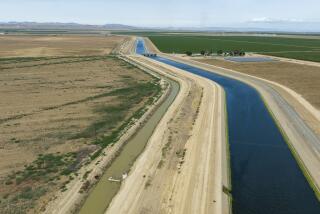Flowering the Desert
- Share via
In a few days President Clinton will sign the California Desert Protection Act. That should be the signal for all involved to drop obstructionistic tactics and cooperate in implementing this historic legislation, which designates two new national parks, a national preserve and 63 new wilderness areas.
Even in the late days of congressional wrangling, federal Bureau of Land Management officials in California lobbied against their own bosses at the Department of Interior to water down the bill and give less authority to the National Park Service. The Department of Defense, which has five major military bases in the Mojave Desert, also posed difficult obstacles, mainly to preserve the right of its aircraft to fly low over the newly protected areas.
Implementation of the law is likely to be almost as contentious as its passage by Congress, and pose a test of whether the government can avoid past mistakes in the development of national parks. In cooperation with other agencies, local and federal, the Interior Department has the opportunity now to apply the latest in ecosystem management tools to preserve the fragile, vital desert.
The Park Service and the BLM have begun to reshuffle responsibilities. Signs designating the new boundaries will go up almost immediately. The biggest task will be to transfer the 1.4 million acres of the new Mojave National Preserve to the Park Service, implementing new rules for off-road vehicles, mining, hunting, rights of way, grazing and the like. The boundaries of the new Death Valley and Joshua Tree national parks will be expanded, and the BLM will have to administer new wilderness areas. It will take a year or two to fully implement the law.
The task is complicated enough without interagency bickering. We respect the BLM’s historic stewardship of the California desert and the military’s need for training areas and overflights. But the time has come to put aside petty rivalries and work out a new rationale for protecting this invaluable resource for posterity.
More to Read
Sign up for Essential California
The most important California stories and recommendations in your inbox every morning.
You may occasionally receive promotional content from the Los Angeles Times.










